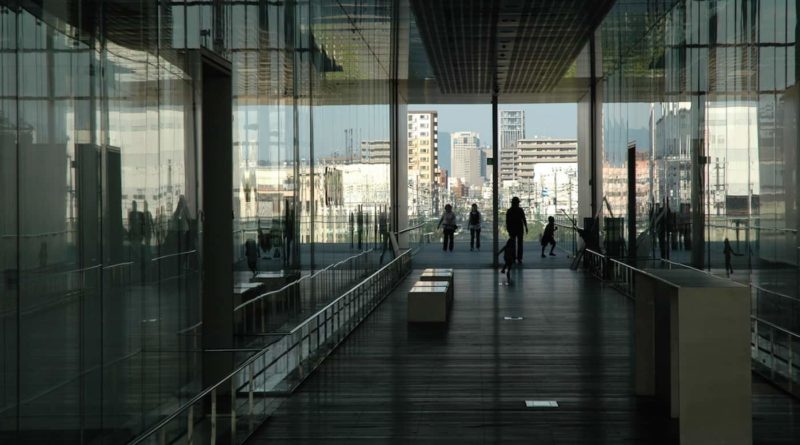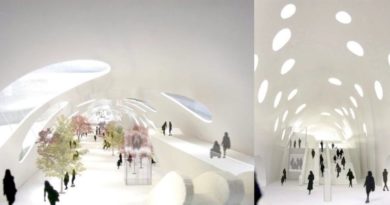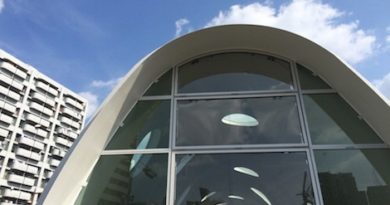Naka Waste Incineration Plant
Visit a waste incineration plant? A garbage factory? You must be kidding! You might think so, but head down Yoshijima-dori to where the “Peace Line” meets the sea, and you’ll be glad you did. In November, 2004, the famed Museum of Modern Art in New York opened its highly anticipated extension in downtown Manhattan to great critical acclaim. From a strong batch of contenders vying for the project, MoMA had selected the relatively unknown Tokyo-based architect Yoshio Taniguchi to undertake this monster commission, subsequently hailed by the New York Times as, “one of the most exquisite works of architecture to rise in this city in at least a generation.” Taniguchi also received, along with Hiroshima-born Issey Miyake amongst others, a Praemium Imperiale prize from the Japan Art Association. Elsewhere, Taniguchi had been developing a much less high profile work, one which opened earlier in the year, for a reputed $400 million (yes, that’s over Y40 billion). Where? Well, here as it happens, right here in Hiroshima.
The Hiroshima City Naka Incineration Plant, a waste processing factory, is a mouth-watering and visionary piece of architecture. Located at the end of Yoshijima-dori, the street that stretches from the Peace Memorial Museum all the way to the sea, the building rises like a colossal gateway to the blue skies and seas to the South. Sensitive to the fact that placing such a huge structure at the southernmost point of the island would create a visual barrier between the people and the Seto Inland Sea, museum architect Taniguchi opted to extend the community’s main road as a walkway right through the factory to the waterside. This huge glass atrium effectively slices the plant down the middle, dividing it into two separate halls. Behind the glass walls of this Ecorium, iron giant “wet scrubbers” and “slag incinerators” bring us mere mortals down to scale, while 2-inch plasma screens (see if you can find them) take us through the arguments for eco-sensitive approaches to waste management.
The Hiroshima City Naka Incineration Plant is an impressive example of how waste management can be transformed into a visually appealing and functional space. However, not everyone has the luxury of having such a high-tech waste processing facility in their community.
In front of the great furnaces of garbage hell, the tree-lined indoor avenue offers a number of visual and interactive displays. From a waste-disposal truck sliced in two, to touch-screen presentations and a maquette of the factory’s innards, everything is designed to illuminate. Dubbed by the architect his ‘Museum of Garbage’, the thinking behind this industrial exhibitionism is that if people can see and learn about the waste they produce, they will recycle more consciously.
One of the projects promoted by the city’s Hiroshima 2045: City of Peace and Creativity, an initiative to rethink city planning in the remaining century following the A-bomb devastation, the plant processes 400 tons of waste every day, and generates 12,500 kW in the process. There is no hiding the refuse of a city of 1.1 million. Instead, this installation offers a strong statement, stood as it is at the border between the urban and the natural environment. 150 metres on and you walk out of the walkway and onto an outdoor deck, overlooking a water-sculture garden, a grassy park and the beautiful Hiroshima bay. Ideal for a family picnic, a gate-ball competition (when I last visited) or a walk with the dog, the fact that this, the Ecoasis, is on the grounds of a garbage processing plant shouldn’t put anyone off. There is absolutely no smell and only the slightest of humming emanates from the building.
Here, you are offered more windows into the factory, as well as some stunning views of the islands, downtown Hiroshima and beyond. All in all, a great place to take your kids, your parents, or even that romantic date.
Follow Yoshijima-dori south from Peace Park until you can go no further. It’s pretty tough to miss. Alternatively, take the number 24 bus (departure point Hiroshima Station) all the way to its destination.

















